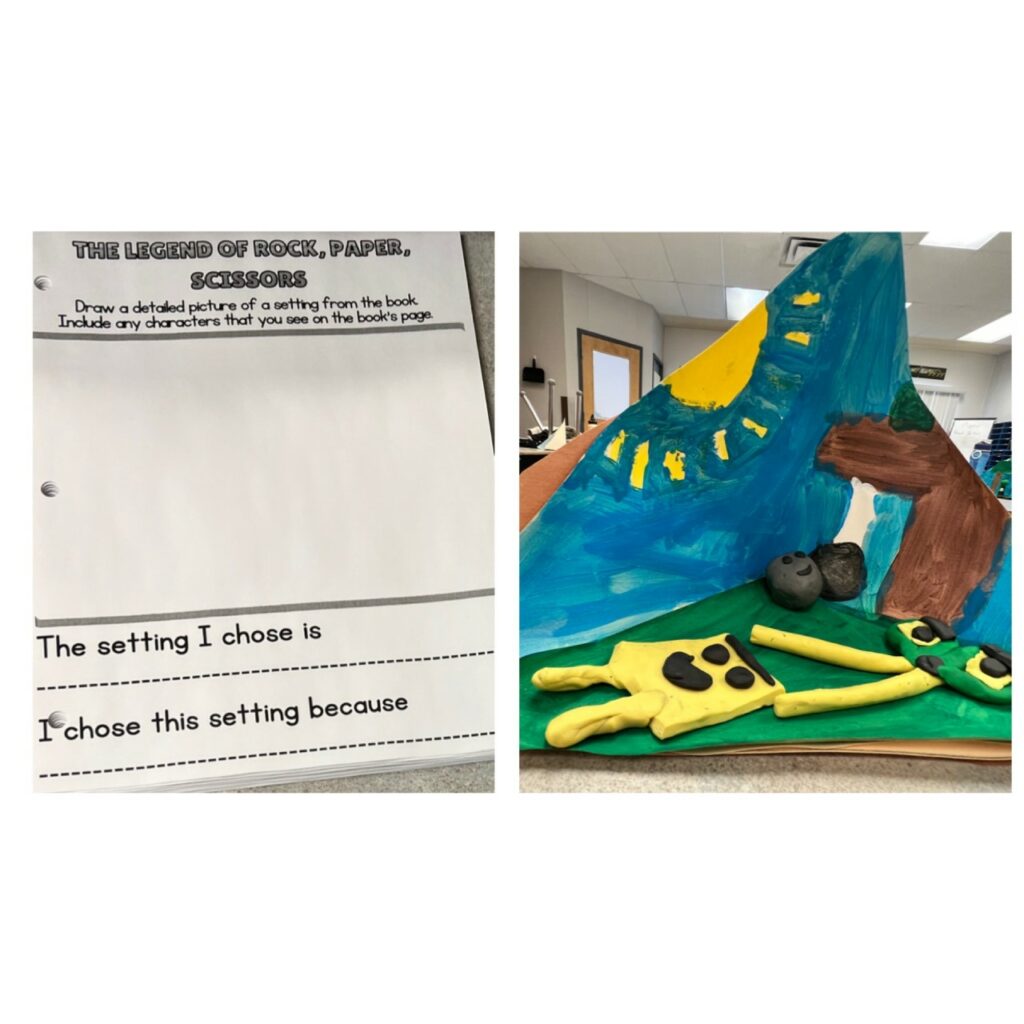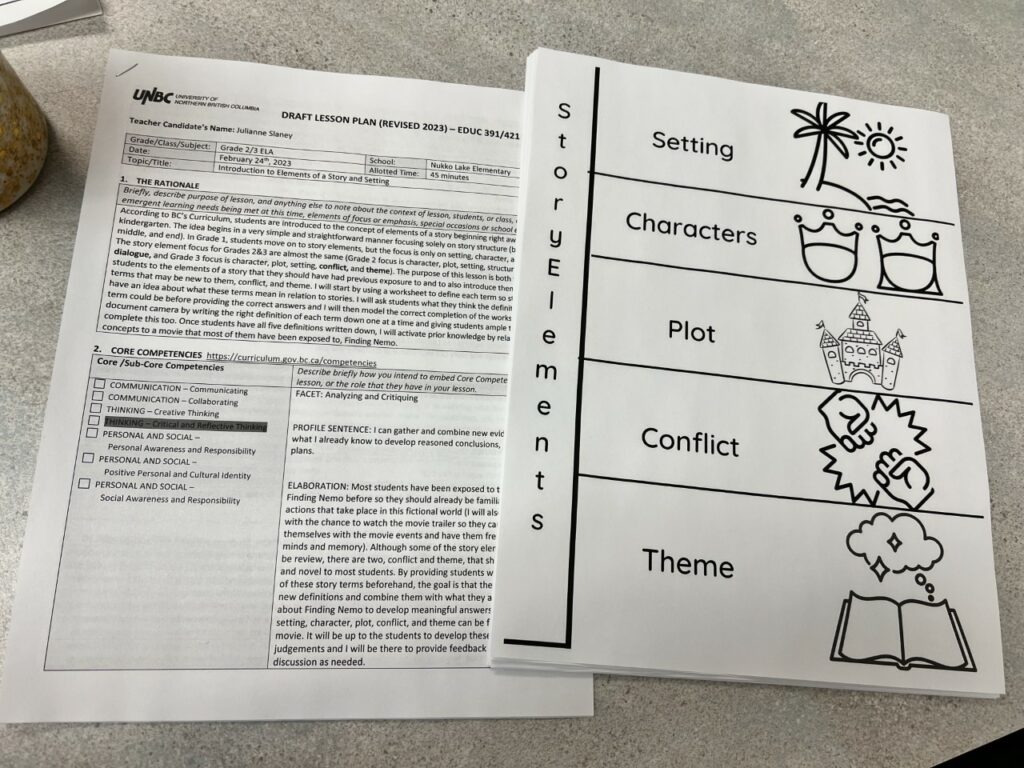If I were to give one word to describe my experience during my three week practicum at Nukko Lake Elementary, it would have to be REWARDING. During my short time at this school, I was welcomed as part of the Nukko Lake staff and community with open arms and was given amazing advice and mentorship by my coaching teacher as well as the rest of the Nukko Lake staff. I felt accepted and appreciated for exactly who I was and what I brought to the school and this allowed me to open myself up completely, to be vulnerable and to take risks without the fear of failure holding me back.

During my time here, I learned a lot about how important it is to get to know the students you are teaching and to implement their likes and interests into the planning process. During my three Tuesday’s spent observing the class before practicum started, as well as during the first two days of practicum spent observing and getting used to the classroom, I learned that these particular students enjoyed participating in hands on activities and their strengths and interests lay in colouring, drawing, and creating instead of reading and writing. I was able to use this information during the lesson planning process to plan lessons that minimized the emphasis on writing, and I incorporated either a hands on element or a drawing and/or colouring element into every lesson I planned. Although some of the lessons I taught stand out more than the rest, I feel like no lesson I taught ever completely flopped and I think this has a lot to do with that. Also, as time went on and my confidence in my classroom management and myself as a teacher increased, as well as the increase in my confidence of what the students were capable of, I was able to increase the difficulty of the hands on activities. The students really enjoyed the experience, learned a lot, and created some amazing work.


I learned how important it is to be well prepared for lessons and to leave in the afternoon with everything ready to teach the lesson(s) for the next day already printed and ready to go on your desk. I had some experience writing lesson plans during our “in situ” learning at Harwin, but we had a week in between lessons then so we had a lot of time to prep and plan. Having to have lesson plans ready 24 hours in advance and teaching 1-2 lessons a day for 5 days straight was a new experience. Prepping for this taught me how important time management is and just how much goes on behind the scenes as a teacher- teaching the lesson was the easiest part of the whole process because of the time and effort I put into the planning process. Sometimes I felt overprepared and too detailed in my planning process, but I always ended up being grateful for this because it gave me a concrete and detailed picture of the elements I wanted to cover in my lesson. Being overprepared also gave me confidence going up to teach because I knew exactly what I wanted to accomplish and how I wanted to get there.

I learned the importance of adaptability as a teacher. Although you may think you have prepped and planned for any possible outcome that could occur, students are going to throw a curveball question during the lesson that is guaranteed to be something you didn’t think about or prepare to answer. This happened to me during my second formal observation where students asked for a different sentence starter for their writing and some asked if they could not use it at all. As a teacher, you have to be ready for these questions and you have to be willing to take the student’s advice and adapt as necessary, so that is what I did. Also, you have to be willing to accept when a pivot does not go well and when it is necessary to revisit a lesson or activity to make sure the students understand the concept and what was being asked of them; I ended up having to do this with my formal lesson activity because when I allowed the students not to start with a sentence starter, many wrote incomplete sentences or the information they chose to include was not related to the topic.
I also learned that it is important to me to laugh with the students, joke with the students, tell them about my life, and show them that you are human too. I made many mistakes while I was teaching but each time this happened I laughed it off and didn’t make a big deal about it. When mistakes occurred, I reminded the students that even teachers make mistakes and that is okay because mistakes are how we learn and become better students, teachers, and people. It was important for me to always be kind, positive, and collected as I was teaching because I hoped that displaying this behaviour would help the students feel the same way during my lesson. I wanted to make sure that I was staying true to myself as I was teaching and I feel like I did that- I am a very positive, kind person who tries not to take herself too seriously and who laughs at her own silly mistakes and this is the person I portrayed to the students. I am proud of myself for doing this, and I can’t wait to see who I will grow into as a teacher in the practicums to come.
One thing I need to work on is incorporating every learning style into my lesson so I can ensure I am hitting as many learners as possible during the lesson process. During my time at Nukko Lake, I found myself explaining instructions and asking for guidance regarding if the students understood the instructions by giving me a thumbs up or a thumbs down or by asking questions if they were unsure. Although this seemed to work for the most part, there were times when students were confused as the explained activity began and I had to go back and provide more guidance as necessary to steer the students in the right direction. To accommodate for this difficulty, I should include a visual demonstration of some kind that clearly shows what I am asking the students to do- this could be through a teacher example, a teacher-student modelling of a game or activity, etc. I found myself forgetting to do this most times and I know including this piece into my lessons would only increase learning and understanding. For my next practicums, my goal is to be more consistent with providing this visual example for students to refer back to so understanding and learning can be deepened.
This was an amazing experience and it showed me I am exactly where I need to be. I cannot believe the difference in myself, both as a teacher and as a person, in these three weeks- I don’t even feel like the same person leaving this experience. This makes me very excited to get back into the classroom. I am excited to continue the planning process and to continue to self-reflect on how each lesson goes and my overall growth. I feel like I already saw how the work that goes into teaching, if done properly and effectively, can produce amazing results, and I cannot wait to see what students can accomplish when I get the opportunity to create unit plans and span the learning over a longer period of time. Onto Education 490 and the 4-week practicum in May!